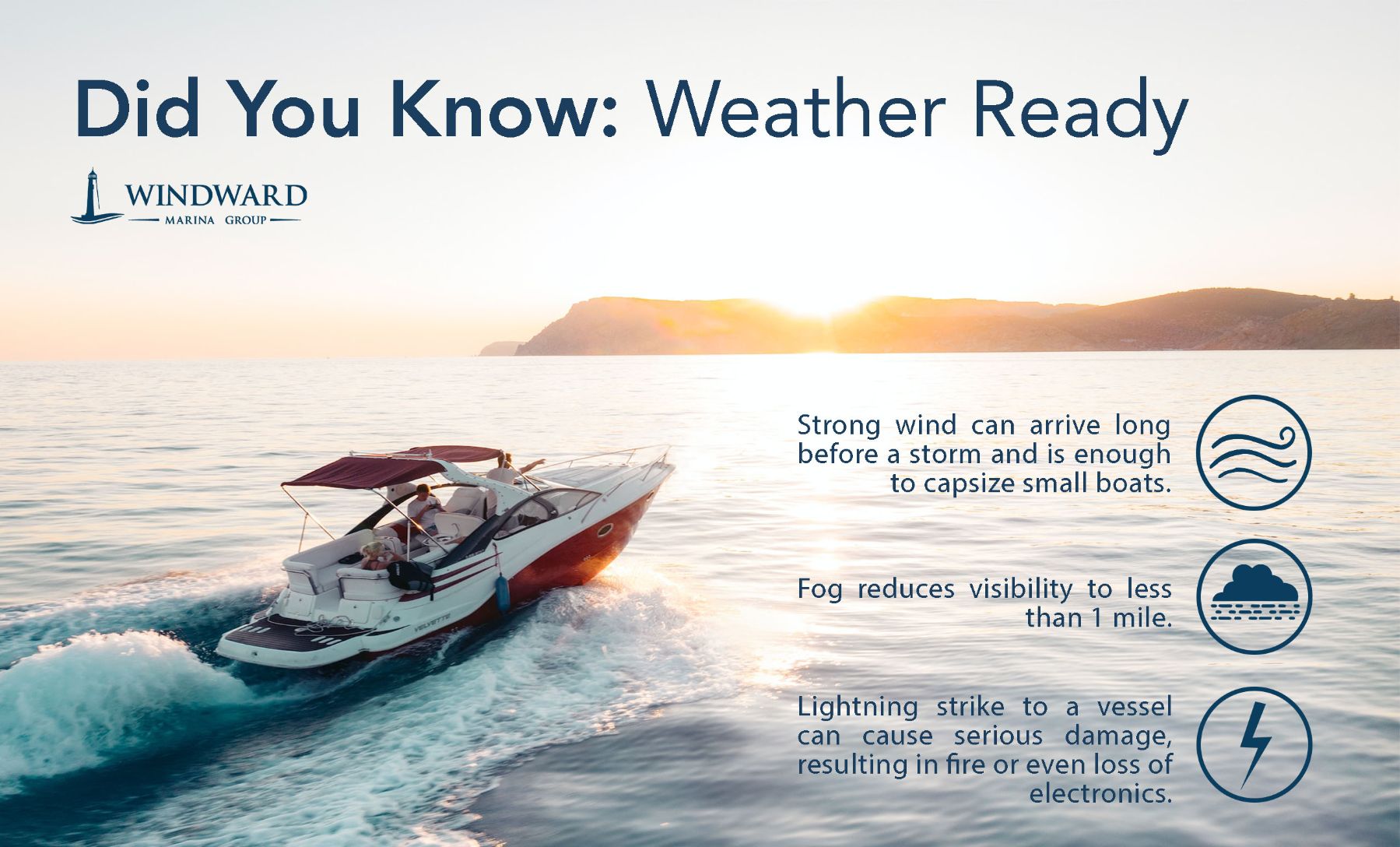
Know before you go
Are you planning to spend a day on the water? Checking the weather, tides and currents should be the highest and first priority before heading out. It is important to understand weather conditions beforehand to ensure a safe and enjoyable boating experience. Boating weather can be unpredictable, and sudden changes can pose risks to both mariners and their vessels. Check the weather ahead of time, then check the day of to be sure conditions have not changed overnight.
Weather Tracking
Several forecasting services can be used to track current and upcoming weather. For example:
– National Weather Service Marin Forecast (NOAA’s National Data Buoy Center)
– Windy App
– Buoyweather
– Marine Weather by Accuweather
– Windfinder
– PocketGrib
– Storm Radar
– WRI Weather Routing
– US Harbors
Tips for planning your boating trips
Check the forecast: Before heading out, always check the weather forecast for your boating area. Pay attention to wind speed and direction, wave height, and any storm warnings.
Monitor Weather Changes: Weather can change rapidly, especially on the water. Continuously monitor the weather throughout your trip using your tools and adjust your plans accordingly.
Have A Storm Plan: Be prepared for unexpected weather changes by planning an escape route to a safe harbor or anchorage if conditions deteriorate.
Equip Your Boat: Ensure your boat is equipped with safety equipment, including life jackets, flares, and a first aid kit, in case of emergencies. If you have passengers on your vessel, you should always inform them where equipment can be found and what to do in the event of a storm.
File A Float Plan: Let someone on land know your boating plans, including your intended route and expected return time. This way, if you don’t return as planned, someone can alert the authorities.
Planning in the event of
Plan for sudden weather changes and be prepared for the worst.
It is important to have procedures in place for getting caught in unexpected weather. Dangerous winds can arrive long before rain. Here are some things to add to your checklist in preparation.
– The first thing you should do is ease the throttle and slow down.
– Be sure all passengers fasten their life jackets. Passengers should not roam the boat but stay in the cockpit or below deck.
– Turn on your navigation lights.
– Batten down the hatches. Prepare your vessel by making sure all loose items are secure or placed below deck.
– Watch the directions of the storm and head the opposite.
– Have friends, family, or crew members keep watch for other boats, nav aids/distress signals, and possible hazards. Monitor your radar as well.
– Wait out the storm before entering shallow water. It’s safer to endure rough conditions in deep water than to try and navigate to port with little depth.
– After the storm has subsided, you can then safely navigate home.
In the event of serious weather:
– If the incoming storm is catastrophic, review your procedures for abandoning ship, including sending a Mayday to Coast Guard Search and Rescue.
– Have your life raft ready to be deployed and stocked with emergency food and water.
– If you are in fear of losing the boat, get everyone on deck and send a Mayday on your VHF-FM radio.
The NOAA issues an alert to warn boaters when weather and boating conditions become hazardous. There are four levels of warning signs, issued by the NOAA, day, and night.
Small Craft Advisory
This warning indicates weather conditions may be dangerous for small boats. Winds have reached at least 18 knots (24 mph) and wavy conditions are rough.
Gale Warning
– This warning indicates winds have reached 34 to 47 knots (39 to 54 mph) inclusive either predicted or occurring not associated with tropical cyclones.
Storm Warning
– This warning indicates winds have reached 48 to 63 knots (55 to 73 mph)
Hurricane Warning
– This warning indicates winds have reached 64 knots (74 mph) and higher.
Bad weather is an inevitable part of boating, but with knowledge and preparation, you can minimize the risks. Always prioritize safety when boating and be prepared to adapt your plans in response. By staying informed on the forecast, using the right tools, and following essential safety precautions, you can enjoy your boating adventures. Remember, safety is key. If conditions look bad, do not head out.



